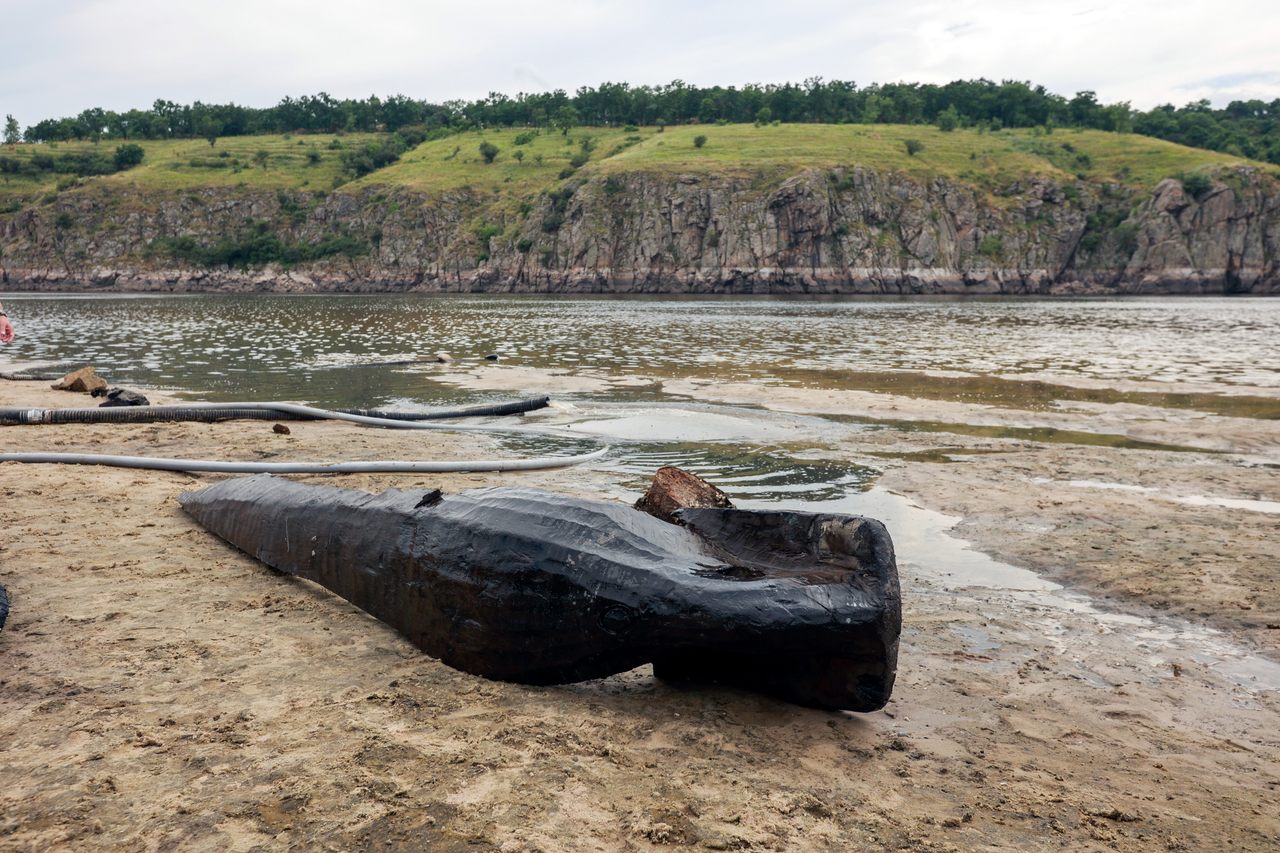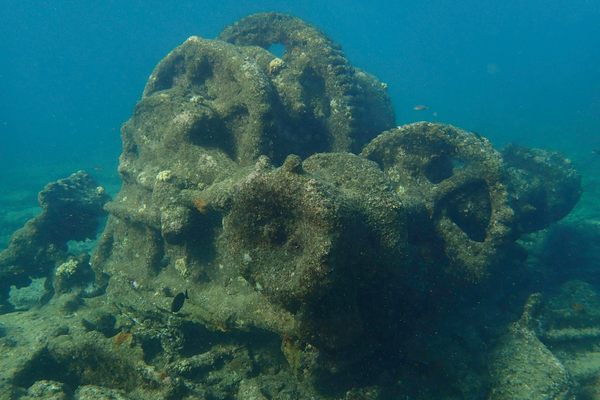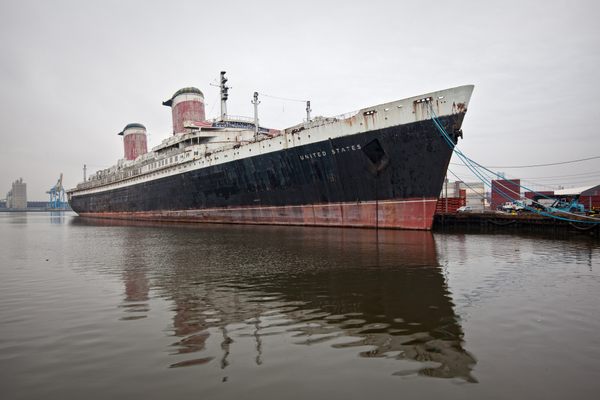The Kakhovka Dam Disaster Revealed an Archaeological ‘Goldmine’
Destruction of the Ukrainian dam unleashed a catastrophic flood—and surfaced centuries of cultural heritage. Now there’s a call not to rebuild it.
On June 29, a local man was walking along the beach on the island of Khortytsia, in the southeastern Ukrainian city of Zaporizhzhia, when he noticed what looked like a log half submerged in water. When he approached, he realized the log was part of a boat, one that was possibly centuries old.
The man called wardens at the Khortytsia National Reserve, the large national park on the island. Soon the police arrived to cordon off the area, followed by engineers and archaeologists who started an operation to rescue the precious find.
Less than a month earlier, an explosion had destroyed the Russian-controlled Kakhovka Dam, 125 miles downriver from Khortytsia. The waters rushed downstream, swelling the Dnipro River and eventually flooding a huge portion of the region. Dozens of villages were submerged, livestock and crops destroyed, and communities cut off and isolated.

But the ecological and economic disaster also had an unexpected consequence: As the Kakhovka Reservoir emptied, it exposed thousands of artifacts. In an area never fully explored by archaeologists before the dam’s construction, there was suddenly the prospect of uncovering significant finds, including old boats—perhaps even one long sought by scholars of Cossack maritime history: a classic early chaika, as iconic in Ukrainian history as the longship is in Scandinavia. It was the promise of finding such treasures that drew both archaeologists and curious civilians to the newly exposed shoreline.

Khortytsia, the largest island on the Dnipro, was lucky not to be flooded when the Kakhovka Dam was constructed in the mid-20th century. The island is home to numerous historical settlements, from Stone Age sites to a Mennonite colony established more than two centuries ago.
In Ukrainian history, Khortytsia is synonymous with the Zaporozhian Cossacks, or “Cossacks from beyond the rapids.” The name refers to the Dnipro’s formerly famous treacherous waters; the rapids disappeared when Soviet-built dams transformed the river and surrounding landscape. The Zaporozhian Cossacks were a community formed in the late Middle Ages. Like other Cossack groups, they were known for semi-democratic governance, a significant level of autonomy, and engaging in military campaigns, both on land and sea, often as mercenaries. Khortytsia was a significant Cossack base in the 16th-18th centuries, and is believed by some to have been the site of their first headquarters. Khortytsia seemed like an excellent place to discover a much-sought early classic chaika. Such a find would become a national treasure.
However, archaeologists quickly determined that the boat discovered in June was not their missing link in Cossack maritime history—but it has a historical significance all its own, and may date to a pre-Cossack settlement on Khortytsia that existed from the 10th through early 15th centuries.
The boat is a dugout canoe, made from a tree trunk, likely oak, that was split in half and hollowed out. It is 6.7 meters, or about 22 feet long, and narrow, less than a meter (about three feet) wide. Once freed from the sandy riverbed, it fell apart into several pieces, which were carefully moved to a nearby hangar. Here, the dugout will be conserved by soaking the pieces in a solution that hardens the wood and prevents it from shrinking when it dries. Eventually it will join the collection of the Museum of Navigation in southern Khortytsia.

Oleh Tuboltsev, a Khortytsia National Reserve archaeologist working on the find, says the team sent samples of the wood to Poland for radiocarbon dating, which will help determine the boat’s age. The boat will help researchers learn more about regional boatbuilding evolution, and, crucially, gives them hope of finding other, even more valuable discoveries.
That’s because the dugout boat is a direct ancestor of the elusive early chaika. The dugout was a simple but durable boat for navigating the dangerous rapids. When the Cossacks arrived in the area in the 15th century, they began improving it, such as covering it with bull hide for better hydrodynamics. Chaikas continued to evolve, as did their reputation for maneuverability in naval conflicts. They eventually became one of the most recognizable Ukrainian cultural symbols. While more modern Cossack boats from the 18th century have been found in the past, archaeologists continue to look for a surviving, classic chaika from this early period—and believe the dam destruction, while tragic, provides new opportunities.
“What was hidden may become visible, so we are looking forward to new discoveries,” says Tuboltsev.
The war makes it impossible to conduct excavations, so archaeologists are limited to doing surveys and monitoring newly exposed areas. Already there have been numerous finds, from a first-century Roman silver coin to German helmets from World War II. And, while the Ukrainian government began planning to rebuild the dam immediately after its destruction, others are advocating for restoring the historical, pre-Soviet Dnipro River landscape.
The area is “one of the most important natural and historical objects for Ukraine,” says Oleksii Vasyliuk, an ecologist and activist with the Ukrainian Nature Conservation Group. Vasyliuk was a coauthor on a report prepared by the group urging that the dam not be rebuilt and the river’s natural floodplains be restored instead. Environmentally, such a move would increase forest cover, restore biodiversity, and improve water quality. The team also pointed to the area’s cultural value.
“This part of the Dnipro valley is the cradle of Ukrainian statehood and a concentration of colossal historical and archaeological heritage,” says Vasyliuk. It has also been little studied.
Oleksandr Alfyorov, from the Institute of the History of Ukraine, calls this southeastern corner of the country “the heart of [Cossack lands],” and adds “To flood again the historical artifacts that are part of national identity is a difficult decision.”
However, that decision is likely to be made. Tuboltsev tries to be realistic, noting that thousands of homes, businesses, and farms depended on the reservoir for their water supply, and there simply may not be other options.
“In the meantime, we should get the most out of the situation by monitoring the banks for artifacts,” he says, pragmatically. “Archaeologists of the past never had such a goldmine.”
























Follow us on Twitter to get the latest on the world's hidden wonders.
Like us on Facebook to get the latest on the world's hidden wonders.
Follow us on Twitter Like us on Facebook